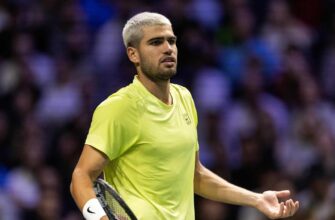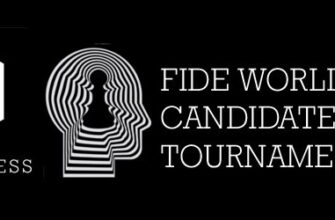As autumn leaves begin to fall, the intellectual intensity inside the Saint Louis Chess Club reaches a fever pitch. The US Chess Championships, a beacon for American chess excellence, has once again brought together the nation`s finest minds to vie for the coveted title and a substantial prize fund. This isn`t just a tournament; it`s a strategic marathon, a test of nerves, and a grand spectacle.
The Arena and Its Warriors
Hosted by the newly expanded Saint Louis Chess Club (STLCC) – a facility rapidly cementing its reputation as the “Chess Capital of the United States” – the Championships feature two distinct, yet equally thrilling, battlefields: the Open section and the Women`s section. Each boasts a roster of 12 elite players, Grandmasters and International Masters, all hungry for victory. With a staggering total prize fund exceeding $400,000, the stakes are undeniably high, transforming every move into a potential step towards financial reward and national recognition.
The Clock`s Relentless Tick
For the uninitiated, chess might appear to be a game of serene contemplation. However, at this elite level, time itself becomes an adversary. The time control for the Championships is a demanding 90 minutes for the first 40 moves, followed by an additional 30 minutes for the remainder of the game. To further intensify the pressure, players receive a 30-second increment per move from the very start. This intricate dance with the clock ensures that brilliance isn`t merely about finding the best move, but finding it swiftly under immense pressure, often forcing players into calculated risks as time dwindles. It`s a system designed to reward both deep calculation and efficient decision-making.
A Marathon, Not a Sprint: The Tournament`s Rhythm
The Championships are scheduled as a grueling, yet exhilarating, eleven-round event spanning from October 12 to 24. It`s a test of endurance as much as intellect, with strategically placed rest days to allow minds to reset and bodies to recover.
- Rounds 1 to 4: October 12-15 – The initial skirmishes, setting the early pace.
- Rest Day: October 16 – A brief respite before the middle-game intensity.
- Rounds 5 to 8: October 17-20 – The heart of the tournament, where contenders emerge.
- Rest Day: October 21 – Another critical pause for strategic recalibration.
- Rounds 9 to 11: October 22-24 – The decisive final rounds, determining the champions.
First Blood and Early Peaces: A Glimpse at Round 1 (Open Section)
The opening round on October 12 provided an immediate taste of the competitive spirit in the Open section. While some players opted for the diplomatic handshake of a draw, others, perhaps less inclined to negotiate, sought immediate tactical advantage. The results offer compelling insights into the early dynamics:
- Grandmasters Samuel Sevian (2698) and Sam Shankland (2654) exchanged pleasantries and pieces, concluding their game in a draw. A cautious start from two formidable players, hinting at deeper strategic battles to come.
- Similarly, Wesley So (2756) and Hans Niemann (2738) – both high-profile figures in the chess world – also settled for a draw. One might wonder if they were saving their more audacious plans for later rounds, or perhaps, simply testing the waters.
- However, the round was not without its decisive moments. The top-rated Fabiano Caruana (2789) demonstrated why he`s a perennial favorite, securing a convincing win against Grigoriy Oparin (2661). Caruana`s precision left little room for doubt.
- Another decisive outcome saw Grandmaster Levon Aronian (2722) secure a commanding victory against Andrew Woodward (2590). Aronian, a seasoned campaigner, showcased his strategic prowess, converting his advantage with apparent ease.
- Awonder Liang (2710) and Abhimanyu Mishra (2652), two of the younger, dynamic talents, fought to a hard-earned draw, suggesting a well-matched contest of wills where neither could break the other`s defenses.
- Finally, Dariusz Swiercz (2577) and Ray Robson (2664) also concluded their first-round encounter with a draw, adding to the day`s collection of shared points.
These early results underscore the delicate balance of aggression and prudence inherent in high-level chess. A draw against a top opponent can feel like a victory, while a decisive win can ignite a player`s momentum for the rounds to come, potentially setting the stage for an explosive tournament.
A Legacy in the Making
The US Chess Championships are more than just a competition; they are a crucible where legends are forged and new stars emerge. The title of US Champion carries immense prestige, representing the pinnacle of chess achievement in the nation. As the tournament progresses, expect intricate strategies, nail-biting finishes, and perhaps a few unexpected twists. The road to becoming a national champion is paved with both brilliant sacrifices and resilient defenses, a testament to the enduring appeal and complexity of the royal game.
What Lies Ahead
With many rounds still to play, the narrative of the 2025 US Chess Championships is only just beginning to unfold. Chess enthusiasts worldwide are eagerly anticipating the strategic masterpieces and dramatic upsets that are sure to come. Follow the action closely as these grandmasters continue their quest for glory, proving once again why chess is often called the “royal game” and Saint Louis its undisputed American capital.







